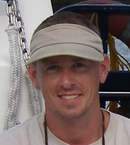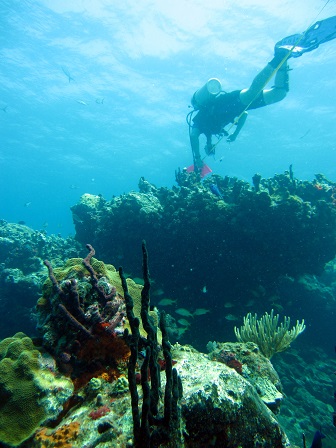By REBECCA NAGY
This article was published in the Autumn 2014 issue of Coastwatch. See the other interviews from this issue here.

Matt Kendall.
The following interview has been condensed and edited.
Matt Kendall is a marine biologist with the NOAA National Center for Coastal Ocean Science’s Biogeography Program — his fellowship host office in 1998. On any given day, you can find him conducting a scuba survey to monitor fish, analyzing remote-sensing data to create a habitat map, advising managers on how best to use his scientific findings or writing journal articles for scientific publications.
From Punta Gorda, Fla., Kendall received his bachelor’s degree in marine science from the University of South Carolina, a master’s in reproductive ecology from North Carolina State University and a doctorate from the University of Maryland in marine science.
The following interview has been condensed and edited.
• What was the general focus of your Knauss fellowship?

Every two years or so, Matt Kendall finds himself in a completely new coastal area. Photo courtesy of Matt Kendall.
I landed in a group at NOAA that does biogeographic analysis of marine organisms and their habitats. I fell in the “try something completely new” category of fellows since I had no background in biogeography. I guess it worked out however, because I’ve been in the same office ever since.
• Please share a highlight or an accomplishment from your time as a fellow.
At the time, our office was helping the National Marine Fisheries Service define Essential Fish Habitat, or EFH. As a fellow, I found myself in charge of working with the Caribbean Fishery Management Council to identify what information was available to meet the EFH mandate. As a result of that early interaction, our office at NOAA now has a lead role in benthic mapping, reef fish monitoring and habitat modelling throughout the U.S. Caribbean. Of course it takes a huge team to do all that, but I felt instrumental in getting the ball rolling during my fellowship year.
• What have been the greatest opportunities that have come out of the Knauss fellowship experience?
The most obvious opportunity is my present job. I jumped at the offer of a federal position shortly after the fellowship ended and I am now in the midst of my 15th year in service. From that beginning, the opportunities snowballed with a promotion within the biogeography group, flexibility to complete a doctorate while working, and now the ability to shape the types of projects conducted by our program.
• How do you apply the experience and skills you gained as a Knauss fellow to your current position and overall career?
The list is too long. I didn’t appreciate until that year how important it is to cultivate relationships in your professional life. I used to think that science and management decisions could be boiled down to just the hard facts. Every day I’m reminded now that it’s also the development of personal relationships that make it easier to push more of our science into making good management decisions.
• Would you recommend that others apply for this fellowship? Why?
Absolutely! You will never have the opportunity to interview for a wider variety of jobs in your life. The intensive placement week makes even the novice into a pro at handling tough interview questions after a few days. Even positions that you are probably not qualified for, you have a real shot at landing so you can test the waters in a new field for a year. Everyone knows that Knauss fellows are motivated, intelligent and ambitious, and can be trained to be productive members of any team doing just about anything. Fellows are often treated as part of the team, not some transient assistant. There are always fewer fellows than there are agencies that want to use them. This means that agencies are competing for you! Half of our staff is made up of former Knauss fellows. It’s a great network to be a part of.

Matt Kendall, left, mapped coral reefs in Majuro in the Marshall Islands. Photo courtesy NOAA Biogeography Branch
For contact information and reprint requests, visit ncseagrant.ncsu.edu/coastwatch/contact/.
